Arranging Your Houseplants
Arranging Your Houseplants
Staging Indoor Plants
At this time of year we have a renewed focus on our houseplants. Many have brought their plants back indoors after growing them outside over the summer. Even those plants that remained inside draw our attention as we go into the season when we’re spending more time in our homes. In fact, plants do so much to help keep our spirits up as the days grow shorter and winter is near. This is the ideal time to think about rearranging your existing plants and adding to your indoor gardens with new plants and ways to display them. Just as it’s fun to periodically rearrange your furniture, it can also be enjoyable to make new arrangements of your plants.
Designing With Houseplants
Making an appealing display of indoor greenery is very similar to designing a garden or landscape. You begin by providing the plants with the conditions that will help them to thrive. You might want to see a particular plant in the darkest corner of your living room, for example, but if there isn’t enough light in that location you should use something else. But beyond giving plants the growing conditions they prefer, there are many ways to create appealing combinations of houseplants.
Contrasting Foliage Colors and Textures
When designing exterior landscapes and indoor plantscapes, we start with contrasting foliage colors and textures. Since flowers come and go, having a variety of leaf colors and shapes means that your garden or houseplant display will always be appealing. For example, if you place a variegated plant next to one with green leaves, and put a variety with tiny leaves in between two plants with big foliage, all the plants are shown to best advantage.
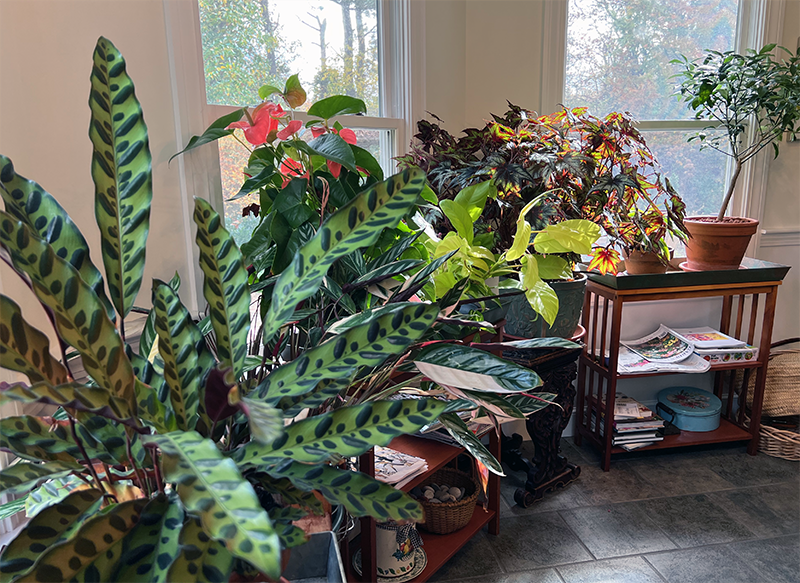
Color Repetition
Just as contrast is important in a houseplant display, repetition also contributes to good design. Use color echoing in the same way you do with your furniture and accessories, by repeating the same shade in several places. This can be done with colors of foliage, flowers or the items you add in with your plants. And don’t stop with plant-related items…you might add a teapot, colorful bowl or other item that seldom makes it out of the cupboard or closet.
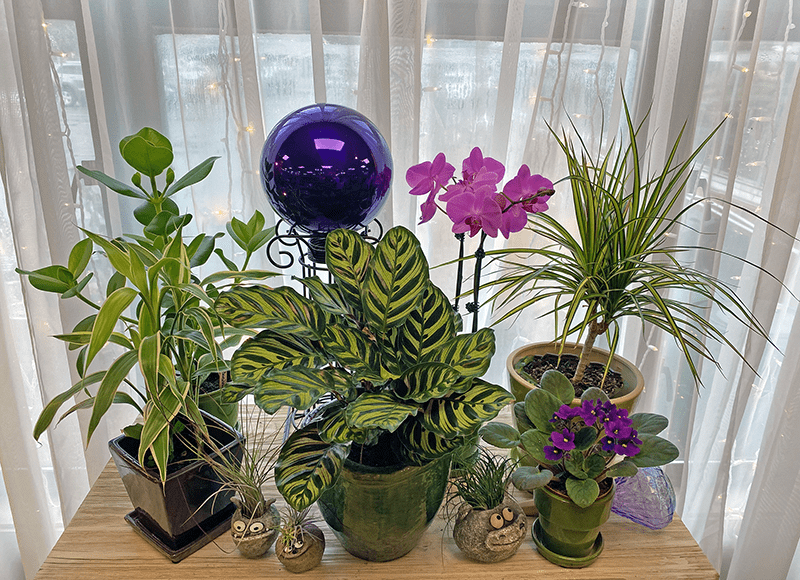
Use Pot Color to Your Advantage
Some love to display their houseplants in pots that are all the same color, while others choose a variety of patterns and colors. Often, however, people have left their plants in a container for years without thinking that the pot itself can add so much to your houseplant staging. This is a fine time of year to repot indoor plants, giving them fresh soil and a bit more root room while providing a different or updated look to your display.
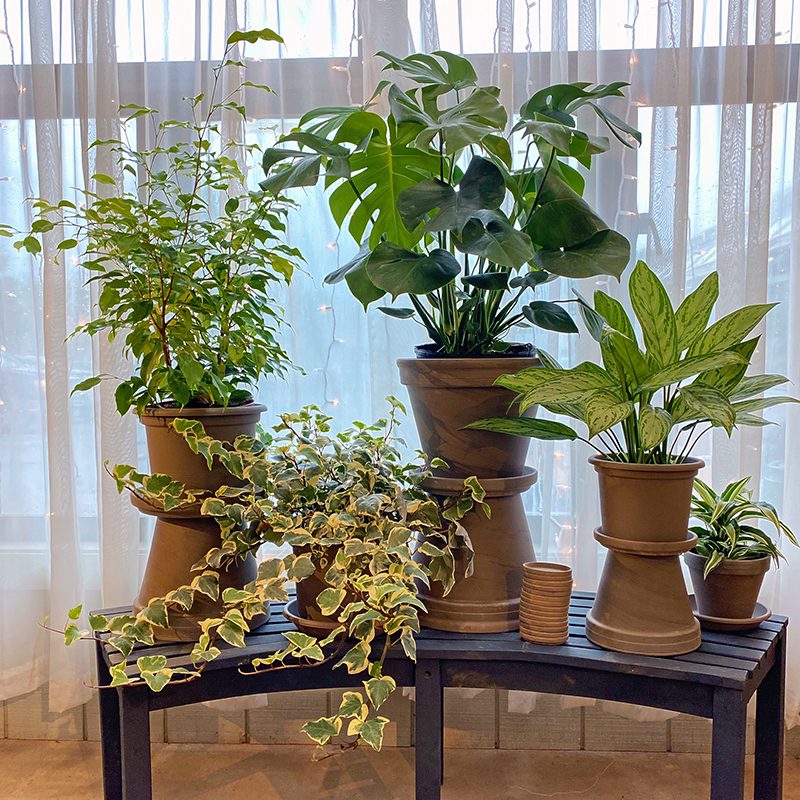

Repurpose, Upcycle, and Display Creatively
You don’t have to put plants on a table or windowsill…you can place them on a benches, stools, chairs, plant stands, other pots or whatever you have on hand. Getting creative also allows you to place plants at assorted levels. This creates an interesting arrangement and allows for more plants in the same window without crowding.
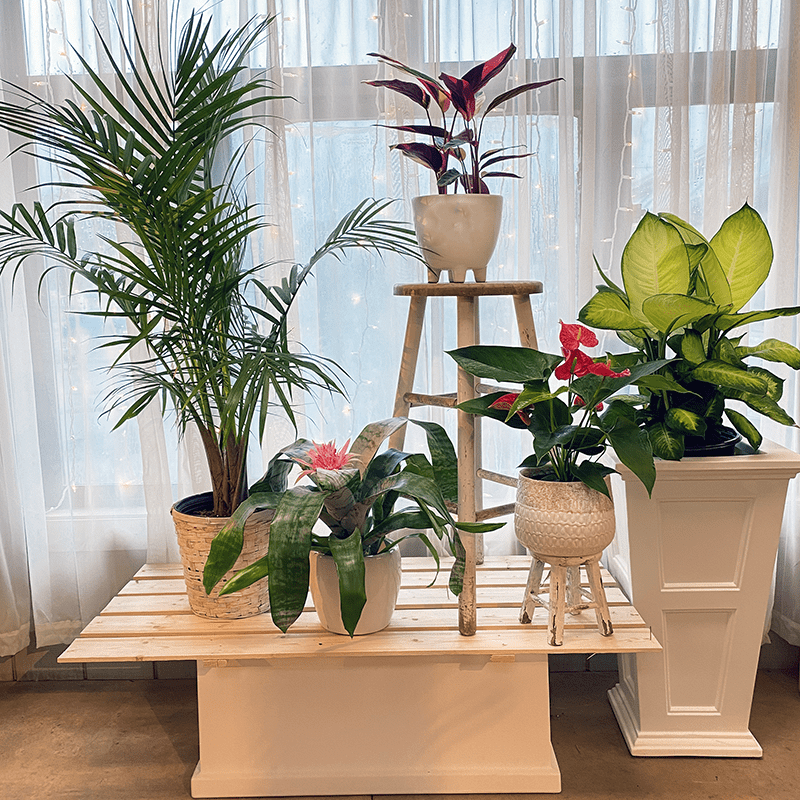
Cluster Houseplants In A Trough or Birdbath
Grouping plants together allows you to create a more humid environment for your plants. This is especially beneficial for ferns, which love high humidity. Whether you’re using a trough, birdbath or a large plastic tray filled with pebbles, such displays help the plants and catch the water that flows out the drainage holes as well.
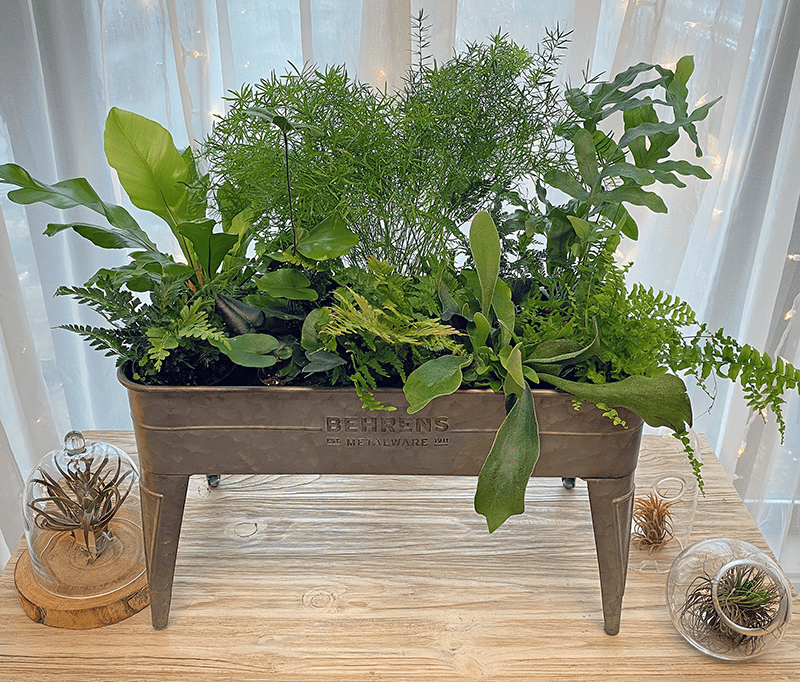
Use the creation of a new houseplant display as a time to clean up plants that you’ve had for a long time. Wipe off dusty leaves, clip off dead stems and foliage even if you aren’t repotting the plant. Adding a couple of tablespoons of earth worm castings to the top of the pots can help add to the health of the soil at this time of year when most indoor plants aren’t being fertilized. And finally, remember to turn plants frequently so that they don’t grow one-sided. Some people give a plant a quarter turn every week when they water, others rotate houseplants 180° once a month, while plant lovers such as myself do it whenever it occurs to them that it’s needed. Whatever your method of houseplant care and display, the important thing is to have fun with it! Let us know how we can help.
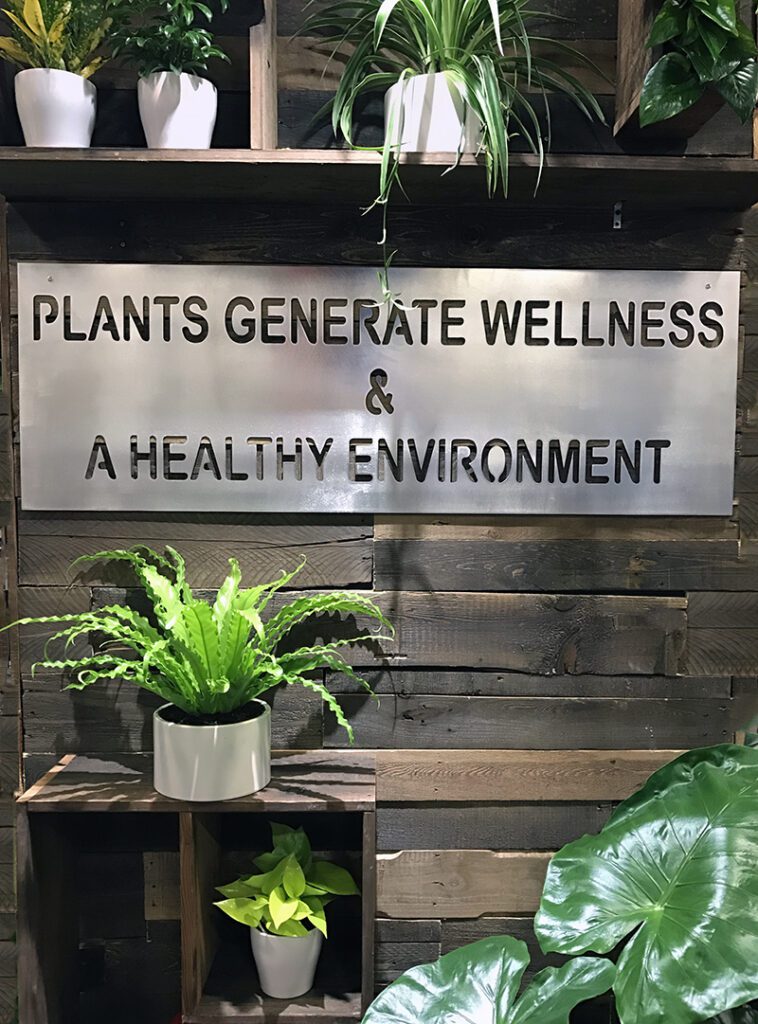
Subscribe To Our Newsletter
Sign up for our weekly email about sales and events.
